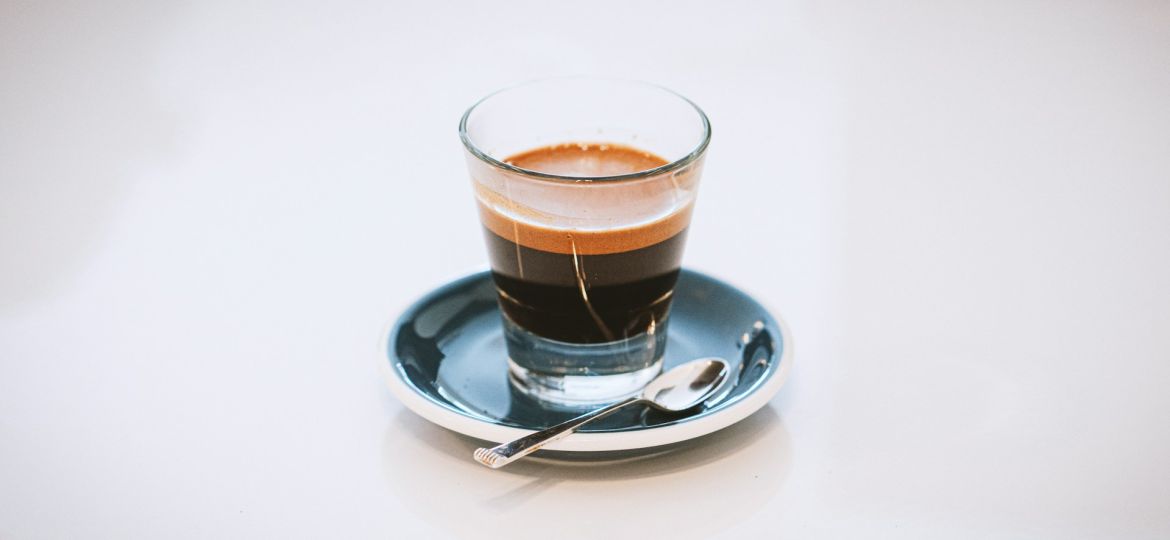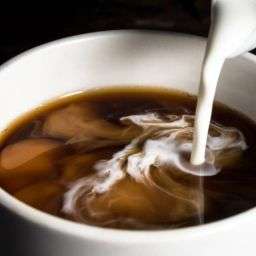
Ever found yourself scratching your head, trying to figure out the real deal between espresso and your regular cup of joe? Well, you’re not alone. It’s a common puzzle, but understanding the difference is more than just coffee trivia – it’s about appreciating the art and science behind your favorite brews. So, let’s dive in and unravel this mystery!
The Basics of Coffee
What exactly is coffee? It’s not just a morning ritual or a pick-me-up; it’s a journey that starts from a humble coffee cherry.
- Origin Story: Coffee’s roots (pun intended!) trace back to Ethiopia. Legend has it that a goat herder named Kaldi discovered the energizing effects of coffee beans. Fast forward through centuries, and coffee is now a global phenomenon.
- Bean There, Done That: Coffee beans are actually seeds from the coffee plant’s fruit. There are two main types:
- Arabica: Known for its sweet, soft taste and higher acidity. It’s the more popular choice globally.
- Robusta: Packs a stronger punch, with a harsher and more bitter flavor. It’s also higher in caffeine.
Characteristics of Coffee Beans:
- Flavor Profiles: Depending on the region, the taste can range from fruity and light to spicy and bold.
- Roasting Magic: Roasting transforms green coffee beans into the aromatic brown beans we know. The roast level can greatly influence the flavor – from light, medium to dark roasts.
The Basics of Espresso
Now, let’s talk about espresso. It’s not just another type of coffee; it’s an experience.
- Espresso Defined: Espresso is a concentrated coffee brewed by forcing hot water under pressure through finely-ground coffee beans. It’s like the superhero version of coffee – stronger and more intense.
- Italian Roots: Espresso began its journey in Italy. The word itself means “express” or “fast,” reflecting the quick brewing process.
Unique Characteristics of Espresso:
- Brewing Technique: Espresso machines use high pressure to extract the coffee, resulting in a thicker, more concentrated shot.
- Crema: The golden layer of crema on top of an espresso shot is a sign of a well-brewed espresso. It adds to the flavor and aroma.
- Flavor Intensity: Espresso is known for its bold flavor and higher concentration of dissolved solids compared to regular coffee.
Understanding the basics of coffee and espresso sets the stage for a deeper appreciation of these beloved beverages.
Brewing Methods: Espresso vs. Coffee
Alright, let’s get into the nitty-gritty of how these delightful drinks are made. Brewing is where the magic happens, and it’s quite a show!
Espresso Brewing Process
Espresso brewing is like a high-pressure love affair between water and coffee. Here’s how it goes down:
- Fine Grinding: Espresso needs finely ground coffee. Think sugar-like fineness.
- The Machine: It’s all about pressure. Espresso machines push hot water through the coffee at high pressure.
- Quick Brew: Espresso is a fast date. It takes about 25-30 seconds to brew a shot.
- The Result: A small, strong shot topped with crema, full of rich flavors and aromas.
Traditional Coffee Brewing Methods
Now, let’s talk about the more laid-back brewing methods for regular coffee:
- Drip Coffee: The most common method in many homes. Hot water drips over medium-ground coffee, through a filter, and into your pot.
- French Press: Coarse coffee grounds steep in hot water, then are separated by a plunger with a metal filter.
- Pour-Over: A more hands-on approach where hot water is poured in a circular motion over coffee grounds in a filter.
- Cold Brew: Coarse grounds steep in cold water for several hours, resulting in a smooth, low-acidity drink.
Comparison of Brewing Techniques
- Time: Espresso is quick and intense, while regular coffee methods are more about slow infusion.
- Grind Size: Espresso uses a fine grind, while other methods range from medium to coarse.
- Flavor: Espresso is bold and concentrated; other methods offer a wider range of flavors and strengths.
The Role of Beans and Roasting
Beans and roasting are like the script and director of a coffee blockbuster. They define the story your coffee tells.
Types of Beans Used for Espresso and Coffee
- Espresso Beans: Typically, a darker roast is used for espresso to enhance its bold, rich flavor.
- Coffee Beans: Can vary widely. Light to medium roasts are common for regular coffee, highlighting the bean’s natural flavors.
Impact of Roasting on Flavor Profiles
Roasting is where beans get their personality.
- Light Roast: More acidity, lighter body, and pronounced flavors. Think fruity or floral notes.
- Medium Roast: Balanced flavor, aroma, and acidity. A crowd-pleaser with more body.
- Dark Roast: Bold, smoky, and sometimes bitter. Less acidity but more perceived strength.
The choice of beans and their roast level plays a huge role in the final cup. Whether you’re sipping a sharp, bright cup of morning joe or a rich, intense shot of espresso, remember, it’s all about the beans and how they’re roasted.
Flavor Profile and Texture
Let’s talk about what really matters – taste and feel. After all, that’s why we love our coffee, right?
Espresso’s Flavor and Texture
Espresso is like that bold, intense friend who’s always full of surprises. Here’s what makes it special:
- Flavor: Think concentrated, rich, and often with a hint of natural sweetness. Depending on the bean, you might catch notes of chocolate, nuts, or even fruit.
- Texture: Espresso is known for its syrupy, almost velvety body. It’s thick and coats your tongue, leaving a lingering aftertaste.
Comparison with Regular Coffee
Now, regular coffee is more like a chill, easy-going buddy:
- Flavor: It’s more diluted than espresso, so the flavors are subtler. You’ll get more of the bean’s true character – whether it’s fruity, floral, or earthy.
- Texture: Generally lighter and more watery compared to espresso. It’s smooth and easy to sip.
Caffeine Content and Health Aspects
We all care about what we’re putting into our bodies, so let’s break down the caffeine content and health aspects.
Caffeine Levels in Espresso vs. Coffee
- Espresso: It’s a common myth that espresso has more caffeine. In reality, a single shot of espresso has about 63 mg of caffeine.
- Coffee: A standard cup of coffee, on the other hand, typically has about 95 mg of caffeine. It’s less concentrated but you drink more of it.
Health Benefits and Concerns
Coffee isn’t just a wake-up call; it’s got some health perks too:
- Antioxidants: Both espresso and coffee are rich in antioxidants, which are great for fighting inflammation.
- Mental Alertness: Thanks to caffeine, they both boost mental alertness and can improve mood.
- Heart Health: Moderate coffee consumption has been linked to a lower risk of heart disease.
But, a word of caution:
- Sleep and Anxiety: Too much caffeine can mess with your sleep and increase anxiety.
- Acidity: Coffee’s acidity might be troublesome for some people with sensitive stomachs.
Cultural Significance and Variations
Coffee isn’t just a drink; it’s a cultural icon. Let’s take a quick world tour to see how espresso and coffee are enjoyed in different corners of the globe.
Espresso and Coffee in Different Cultures
- Italy: The birthplace of espresso. Here, coffee is an art, and espresso is a quick, stand-up affair, often enjoyed at a bar.
- USA: The land of variety. From the classic drip coffee to the trendy cold brew, Americans love their coffee in all forms.
- Turkey: Famous for its strong, unfiltered coffee, often brewed with spices.
- Australia: Known for popularizing the flat white, a smooth, creamy coffee drink that’s like a latte’s cooler cousin.
Popular Espresso and Coffee-Based Drinks
- Latte: Espresso with steamed milk and a bit of foam.
- Cappuccino: Similar to a latte but with more foam.
- Americano: Espresso diluted with hot water, resembling drip coffee.
- Mocha: A latte with chocolate, for those with a sweet tooth.
FAQs
- Q: Can any coffee bean be used for espresso?
- A: Absolutely! While some beans are better suited for espresso, technically, any coffee bean can be used.
- Q: Is espresso stronger than coffee?
- A: In flavor, yes. In caffeine content per volume, also yes. But in total caffeine per serving, regular coffee usually has more.
- Q: Why does espresso have crema?
- A: Crema is the result of the high-pressure brewing process, which emulsifies the oils in the coffee.
Read more bout Decaf Coffee: Good or Bad?
Conclusion
They’re both incredible beverages with their own unique charms. Espresso is like a concentrated burst of coffee goodness, while regular coffee offers a more mellow and varied experience. Understanding these differences isn’t just about knowing your drinks; it’s about appreciating the rich history and culture behind every cup. Whether you’re sipping a smooth latte or a robust Americano, remember, it’s all about enjoying the journey that is coffee.
Read more about What’s the difference between Espresso and Coffee?









